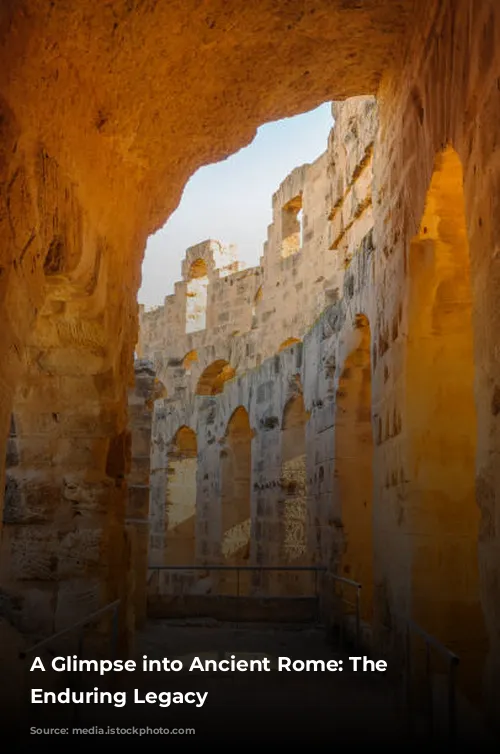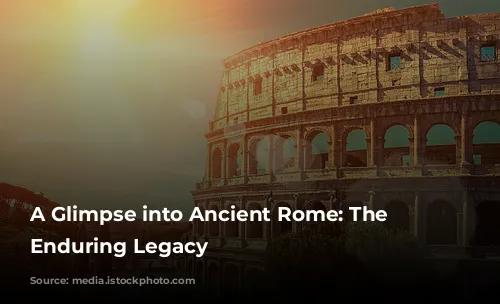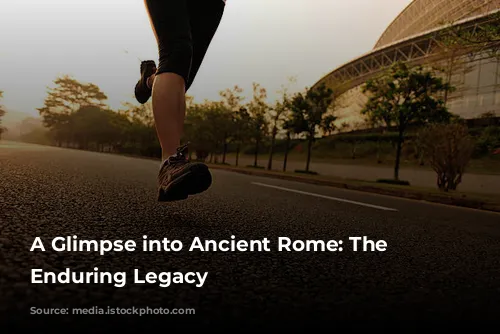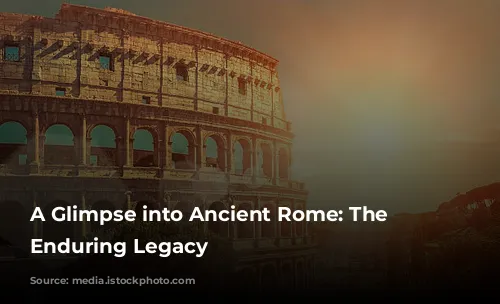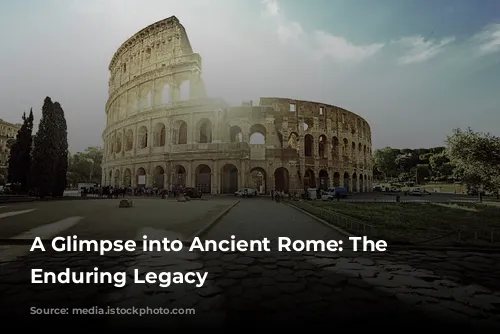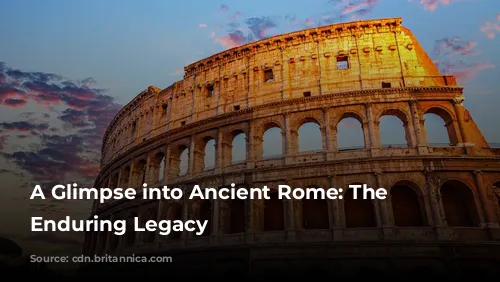The Colosseum, a towering testament to the grandeur of ancient Rome, stands today as a poignant reminder of the empire’s architectural and engineering genius. This iconic structure is not only a treasure trove of history but also a significant source of income for Italy. In 2018, the Colosseum, the Roman Forum, and Palatine Hill collectively attracted a staggering amount of tourists, generating over $63.3 million (€53.8 million), solidifying their position as Italy’s top tourist draw.
This paragraph introduces the Colosseum as a symbol of ancient Rome’s architectural and engineering prowess, while highlighting its economic significance for Italy.
From Glory to Neglect and Restoration
Time, however, had not been kind to this majestic structure. After the decline of the Western Roman Empire, the Colosseum faced a period of neglect and decay. The 12th century saw the Frangipane and Annibaldi families repurposing the arena as their fortress, a stark contrast to its original purpose. The 15th century witnessed the Colosseum’s further decline, as Pope Alexander VI granted permission for its use as a quarry. This period of over a thousand years of neglect left the once-glorious Colosseum in a state of disrepair. Thankfully, the 1990s brought about a much-needed revival, with state-funded restoration efforts breathing life back into this architectural marvel.
This paragraph details the Colosseum’s decline after the fall of the Roman Empire, outlining its use as a fortress and quarry. It concludes with the positive turn of events with the start of restoration efforts in the 1990s.
A Symbol of Imperial Might and Entertainment
The Colosseum’s construction was a bold statement of imperial power, designed to revitalize Rome after the tumultuous year of the four emperors in 69 CE. Emperor Vespasian, a man who ascended to the throne from humble beginnings, envisioned the Colosseum as a grand entertainment venue. He intended it to host captivating events, ranging from the thrill of gladiator fights and the spectacle of animal hunts to even elaborate mock naval battles.
This paragraph discusses the Colosseum’s construction as a way to revitalize Rome after a period of political instability. It highlights Vespasian’s vision for the Colosseum as an entertainment hub.
A Legacy Built on Blood and Stone
Construction of the Colosseum commenced under Vespasian between 70 and 72 CE, with the completed structure being dedicated in 80 CE by his son and successor, Titus. Its final touch, the fourth story, was added by Emperor Domitian in 82 CE. Sadly, the Colosseum’s construction came at a heavy price, paid for with the spoils of war from Titus’s sack of Jerusalem in 70 CE, and built by enslaved Jews from Judaea. This historical fact casts a shadow on the Colosseum’s grand facade, reminding us of the human cost behind its creation.
This paragraph provides specific details about the construction of the Colosseum and its dedication, highlighting the use of spoils from the sack of Jerusalem and the forced labor of enslaved Jews.
An Architectural Masterpiece: Design and Function
The Colosseum, also known as the Flavian Amphitheatre, is an awe-inspiring elliptical structure crafted from stone, concrete, and tuff. Rising four stories high, this architectural marvel measures a staggering 620 by 513 feet (189 by 156 metres) and could accommodate as many as 50,000 spectators. The Colosseum’s fame, however, is inextricably linked to its infamous use for gladiatorial combat, a testament to the brutality and entertainment of the Roman world.
This paragraph provides details about the Colosseum’s architectural design, dimensions, and materials, highlighting its capacity and its association with gladiatorial combat.
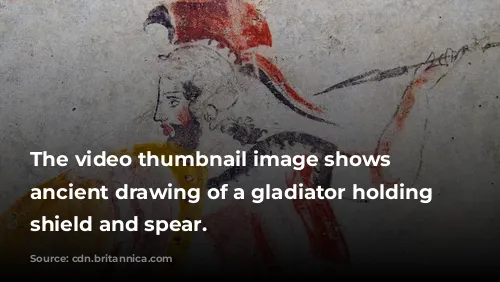
A Symbol of Power and Public Entertainment
The Colosseum’s location, just east of the Palatine Hill, holds symbolic significance. It was built on the site of Nero’s Golden House, replacing his private lake with a public amphitheater that could host tens of thousands of Romans. This decision was not merely practical, but also symbolic of Vespasian’s desire to create a public space for entertainment, a stark contrast to Nero’s opulent and self-serving palace.
This paragraph explores the symbolic significance of the Colosseum’s location, emphasizing its contrast to Nero’s private palace and highlighting Vespasian’s intention to create a public space for entertainment.

A Monument to Roman Engineering and Design
The Colosseum’s construction was a marvel of engineering. Unlike previous amphitheatres, which relied on hillsides for support, the Colosseum stands as a freestanding structure, relying on a complex system of barrel and groin vaults. Its exterior features three stories adorned with arcades and engaged columns in the Doric, Ionic, and Corinthian orders. This distinctive architectural arrangement, known as the assemblage of orders, became a hallmark of Renaissance design. The Colosseum’s main framework and facade are crafted from travertine, while volcanic tufa forms its secondary walls. The inner bowl and arcade vaults are constructed from concrete.
This paragraph focuses on the Colosseum’s unique architectural features and engineering marvels, highlighting its use of various materials and its influence on Renaissance design.
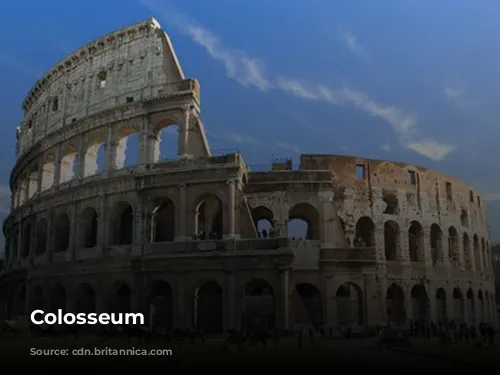
Entertaining Thousands under the Roman Sun
The Colosseum was designed to accommodate a vast audience. With a seating capacity of 50,000, spectators enjoyed the spectacle from tiered seating, protected from the sun by a massive retractable awning known as the velarium. This intricate structure, supported by masts extending from the Colosseum’s upper story, required the efforts of hundreds of Roman sailors to manipulate its rigging. The Colosseum became a stage for various events, from gladiatorial combat and animal hunts to mock naval battles, offering a glimpse into the brutality and entertainment of Roman life. However, the veracity of its use as a site for the martyrdom of early Christians remains uncertain.
This paragraph explores the practical aspects of the Colosseum’s design, highlighting its seating capacity, the use of a retractable awning, and the variety of events held within its walls. It also touches on the debated use of the Colosseum for Christian martyrdoms.
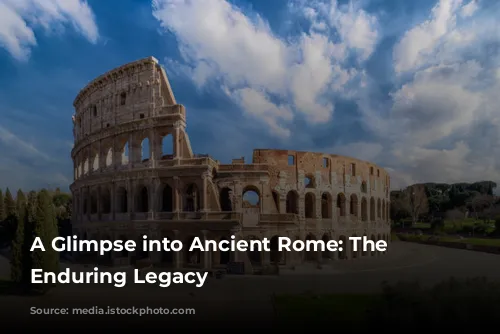
From Glory to Decay and Revival
The Colosseum’s journey has been marked by both glory and neglect. In medieval times, it transitioned from a site of entertainment to a church, then a fortress, and finally a quarry. Earthquakes, lightning strikes, and the ravages of vandalism and pollution took their toll, stripping the structure of its marble seats and decorative elements. The Colosseum was left in a state of disrepair for over a thousand years. However, the 19th century witnessed the beginning of preservation efforts, spearheaded by Pius VIII. These efforts culminated in a large-scale restoration project in the 1990s, breathing new life into this ancient monument.
This paragraph explores the Colosseum’s transformation through the centuries, detailing its various uses and the damage it sustained before the start of preservation efforts in the 19th century.
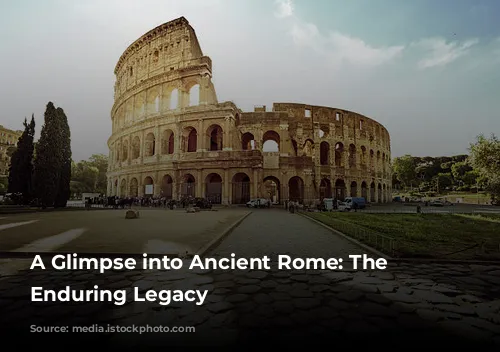
A Timeless Symbol of Ancient Rome
Today, the Colosseum stands as a testament to the ingenuity of the Roman people. It continues to draw millions of visitors each year, captivating them with its grandeur and providing a glimpse into the ancient world. The Colosseum remains one of Rome’s most iconic landmarks, a reminder of the empire’s architectural prowess and its enduring legacy. Regular exhibitions revolving around ancient Roman culture further enrich the visitor experience, ensuring that the Colosseum continues to inspire awe and wonder in generations to come.
This paragraph concludes the article by summarizing the Colosseum’s enduring legacy as a testament to Roman ingenuity, a major tourist attraction, and a source of continued historical and cultural understanding.
